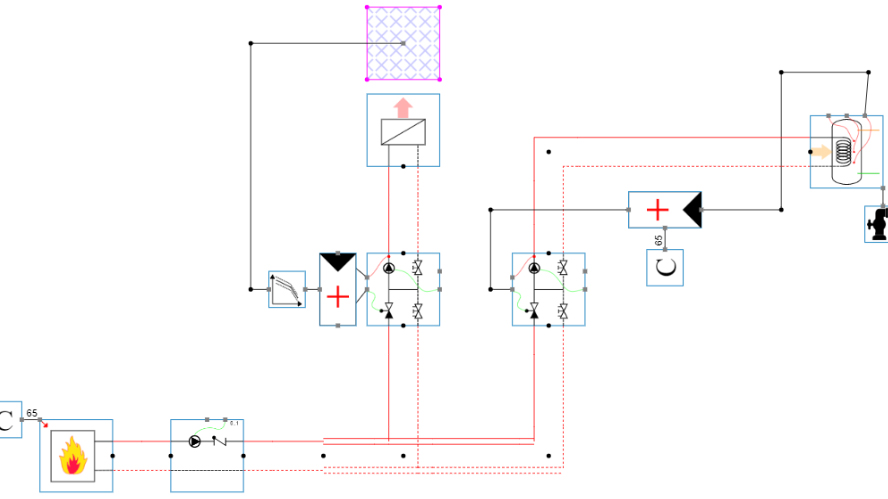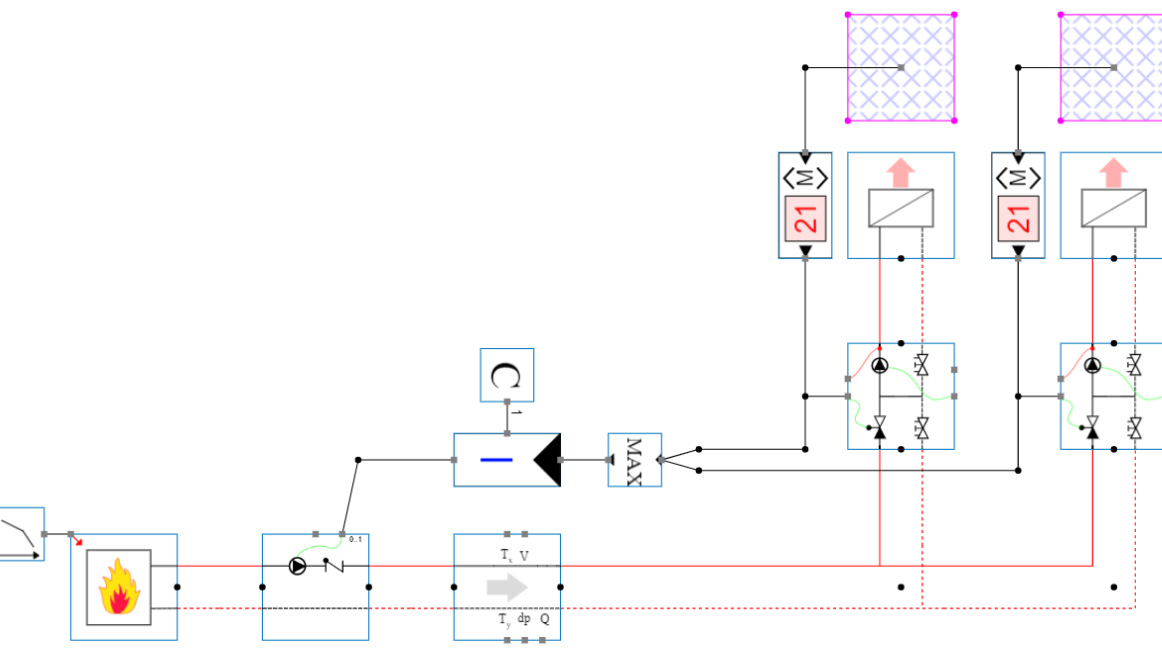Understanding Why Control Loops Become Unstable
In many HVAC systems, control loops fail not because of faulty controllers, but because the hydraulic network provides conditions the controller cannot stabilise. When flows shift unpredictably or pressure drops fluctuate excessively, even well-tuned controllers begin to oscillate.
One major driver is poor valve behaviour. If a valve cannot regulate effectively because of a hydraulic mismatch, even a small stem movement may cause large flow swings. Engineers use control valves to represent how valves behave under real circuit resistance, making it clear why instability occurs when authority is compromised.
Another issue is the interaction between distributed circuits. When multiple branches open and close, the pump experiences abrupt changes in system resistance. If the controller and pump control strategy are not aligned, this creates oscillations that propagate throughout the loop.
How System Dynamics Amplify Control Issues
HVAC systems rarely remain steady — loads vary, pumps adjust, and valves modulate. Without accounting for this dynamic behaviour, part-load operation often exposes control problems that remain hidden during design.
Modelling the hydraulic structure using distribution circuits shows how branches influence one another. When a “fast” branch consumes most of the flow due to lower resistance, other branches may starve, causing erratic temperature control.
In addition, pump operation plays a key role. A fixed-speed pump or an unsuitable control curve may cause excessive head at part-load, forcing valves into unstable regions of their characteristic. By incorporating realistic behaviour from templates such as pump control, engineers can understand how pump responses influence overall loop stability.
Matching Control Logic to Hydraulic Reality
Stable control loops require hydraulics that support the controller rather than work against it. This includes:
- ensuring valves experience meaningful pressure drop across their full operating range
- sizing circuits and balancing flows to avoid excessive differences in resistance
- selecting pump control modes that reduce head as flow demand falls
- verifying how circuits behave across all expected load conditions
Hydraulic modelling provides clarity on how circuits behave when interacting with one another. By defining system zones and logical flow paths through how to model your system, engineers can identify which branches destabilise control loops and adjust design or control strategy accordingly.
Once these elements align, controllers operate with far more predictable behaviour, avoiding hunting, overshoot and temperature drift.
Practical Indicators of Failing Control Loops
Common signs that a control loop is being undermined by hydraulics rather than control logic include:
- coil temperatures that fluctuate even when load is steady
- valves that never settle and continuously “hunt”
- pumps running at unnecessarily high speed
- slow or weak response to setpoint changes
- inconsistent temperatures across parallel branches
System modelling helps pinpoint exactly where instability originates — whether it is insufficient pressure at a remote branch, too little resistance in a close one, or a pump operating far from its efficient region.
Stabilising Control Loops Through Better System Design
Improved stability results from strengthening the hydraulic foundation:
- use balancing to equalise branch resistance
- maintain valve authority by allocating appropriate pressure drops
- apply a pump control mode suited to variable flow
- reduce bypass effects and unwanted mixing
- verify ΔT under multiple operating conditions
With these measures in place, HVAC systems respond smoothly to controller commands, delivering better comfort and reducing energy consumption.
FAQ: HVAC Control Loop Stability




